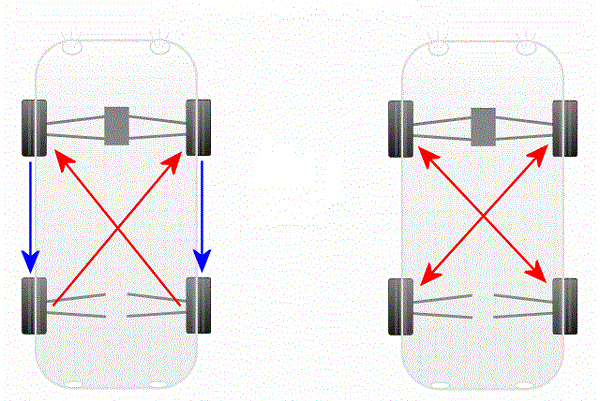When should you rotate your car tires?
During operation, due to many factors, the wear of 4 tires is uneven. Therefore, the car tires should be rotated to ensure that the car operates reliably.
Under actual operating conditions, factors such as uneven weight distribution, terrain or driving patterns make the four tires uneven. In addition, the steering makes the front tires worn faster than the rear. At the same time, most cars have engines in front, so the front tires have to bear a heavier load.
For left-hand drive vehicles such as in the Philippine market, the front tire on the right will wear the most, then the left front tire, the rear right tire and the rear left tire. Tires wear out not evenly but in certain areas. Different transmission systems will have different tire rotation procedure.
Automobile tire manufacturers generally recommend rotating tires every 5,000 km, or 8,000-10,000 km at trustworthy centers. In addition to tire rotation, the vehicle owner should perform additional tire balancing and check the wheel angle. For those who have experience in car care and maintenance, simple tire rotation can be done at home.

Car tires should be periodically rotated to ensure smooth operation
1. The benefits of rotating tires
Rotating tires will give the tires a more uniform abrasion, making the car more stable, ensuring better traction on the road, all of which bring about a safe driving experience on every journey. The tire’s lifespan also increases if the tire is periodically rotated, and the fuel-saving level can be as high as 3%.
2. The process of car tires
Different driving systems require different styles of tire rotation.
2.1. Front-wheel drive system
For the front-wheel drive, symmetric tire rotation is recommended. Most cars on the market use front-wheel drive, so this is the most common case. The rule is to rotate the rear left to the front right and the rear right to the front left, or rotate the front left to the rear left and the front right to the rear right, or cross over all 4 wheels.

Tire rotation rule with front-wheel drive vehicles
2.2. Rear-wheel drive system and all-wheel-drive system
For cars with rear-wheel drive or 4-wheel drive, move the front left tire to the rear right, the front right to the rear left, the rear left to the front left and the rear right to the front right; or cross over the whole four tires.

Rules for rotating tires with rear-wheel drive vehicles
In case of using asymmetric tires, it is necessary to avoid changing the rotational direction of the wheel. Just change the left front tire for the rear left and the front right for the rear right to keep the rotation of the tires.

Tire reversal rule with asymmetric tire
In case of spare tires, this tire will be exchanged for the tire worn-out the most. For vehicles with front-wheel drive, replace the rear right tire with the spare tire, move the rear right to the front left, the front left to the rear left and the rear left to the front right. For vehicles with rear-wheel drive, the spare tire is for the front left tire.
During the operation of the vehicle, to ensure the longevity of the tire, avoid excessive abrasion; keep in mind that: don’t accelerate suddenly, don’t take an abrupt turn, don’t slam on your brake pedal and ensure the tire pressure meets the standard.
RECENT ARTICLES








